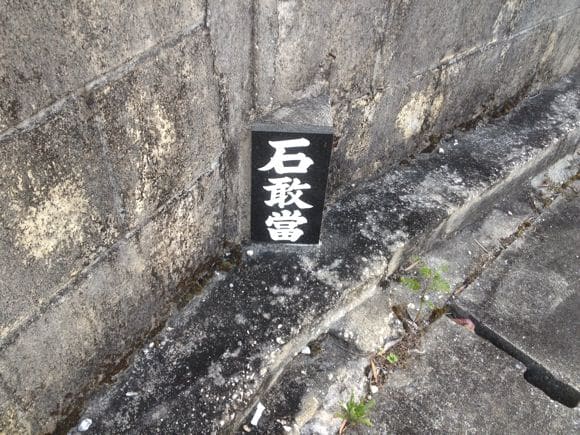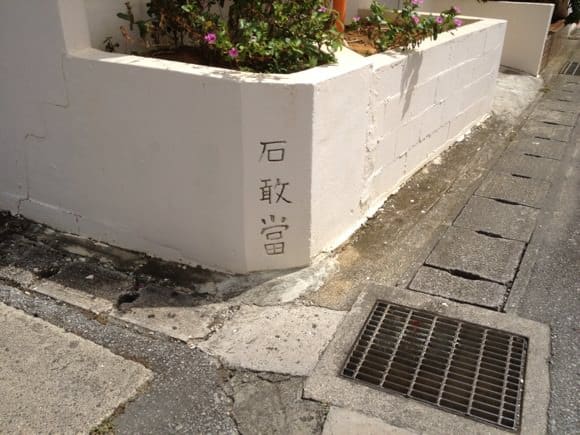When I visited Miyako Island, a remote island in Okinawa, I kept noticing stone markers inscribed with “Ishigando” (石敢當) at street corners and intersections.
I had never seen these markers in my hometown of Nagasaki or my current residence in Fukuoka, or anywhere else for that matter. Yet on Miyako Island, they seemed to appear everywhere.
So what does this character mean, and how is it read? I decided to investigate.
The Meaning Behind Ishigando Markers Found Throughout Miyako Island
The markers I spotted looked like this.
They appeared to be deliberately placed at locations where roads intersect.

The designs vary—some are mounted on proper stone plaques, while others appear to be written directly on walls.

This one is also at an intersection, as expected.

After searching online, I found the following information on Wikipedia:
This tradition originated in China, with Fujian Province as the birthplace. In Japan, these markers are concentrated on Okinawa’s main island and scattered throughout the surrounding islands. Many also exist in Kagoshima Prefecture, including the Satsunans and the Amami Islands. While they can be found throughout Japan outside of Okinawa and Kagoshima, their numbers are minimal. In Okinawa Prefecture, they are called “ishigandou” or “ishigantou,” while in Kagoshima Prefecture they are often called “sekkantou.” A supernatural creature known as “Majimun” (a demon) that wanders through towns is believed to move in straight lines only. When it crashes into dead-end streets like T-intersections or three-way junctions, it is thought to enter the house across the way. Therefore, Ishigando markers are placed at the dead-ends of T-intersections and three-way junctions to prevent the demon’s entry, serving as protective talismans. It is believed that when a Majimun strikes an Ishigando marker, it shatters into pieces.
So that’s what it means.
• Originally a Chinese-derived protective charm placed at street intersections and dead-end junctions to ward off evil
Now it makes sense!
Final Thoughts
I didn’t recall seeing these on Okinawa’s main island, perhaps because travel there is mostly by car. But next time I visit, I’ll make a point to look for them.
I learned something new!


Comments